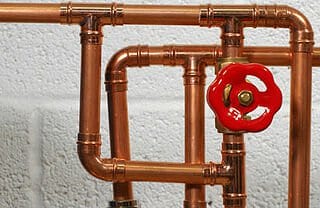
You hear a lot about natural gas, but what exactly is it? Is it safe? Does it affect the environment? Read the frequently asked questions answered by our experts.
What exactly is natural gas?
Natural gas is a clean, safe, and affordable form of energy that is available for both businesses and residential consumers alike.
Natural gas is a fossil fuel, meaning that it originated from the remains of animals and plants that lived millions of years ago. These remains were compressed under soil and rock, eventually changing into the natural gas we use today. Natural gas is located deep beneath the surface of the earth. Layers of rock hold the natural gas when it attempts to come to the surface. Wells are drilled to extract the natural gas from the earth.
It is efficient and relatively safe for use, but like any combustible material, you must take precautions and be able to recognize signs of possible hazards to keep your home and family safe.
What are some common uses of natural gas?
Did you know that natural gas is the second largest source of energy in the United States? Natural gas is used by power companies to generate electricity, industries use it for both heat and as a power source, and of course, residential consumers use it for tankless gas water heaters and cooking, to name a few.
What is the unit of measure for natural gas?
In the United States, sales of natural gas are listed in therms, where 1 therm is equivalent to 100,000 BTUs. A single family home typically consumes 1,000 therms every year.
How does natural gas get into my house for usage?
Natural gas is delivered to your home through a system of underground pipelines. These pipes are made of durable materials, such as stainless steel or copper, and are installed by licensed, professional gas technicians. Flexible piping and advanced venting systems means that connections can be made almost anywhere you want – such as tankless gas water heaters, laundry dryers, patio heaters, and more.
How safe are these natural gas pipelines?
Pipelines are a very safe and cost-effective way to move the huge amounts of natural gas that we use daily. For example, if you wanted to move the same amount of natural gas using trucks, you would need 750 tanker trucks, moving out every 2 minutes, 24 hours a day, 7 days a week. That’s a lot of trucks!
There are also extensive inspection and monitoring systems and programs in place to ensure the safety of natural gas transmission through its pipelines. Pipeline operators must follow these safety procedures to look for potential leaks and develop new ways to minimize issues to the public.
Government regulations, policies, and standards address all aspects of pipeline operations, starting from where and how they are built to how they are installed, maintained, and tested.
How do I know where a pipeline is located?
Line markers and warning signs specify the approximate location of pipelines along a route. These identifiers tend to be in bright colors to make them easily visible. Also, they are often found at frequent intervals along the pipeline route, as well as at points where the pipeline meets a street, highway, waterway, railway, and other high traffic areas. Additionally, each marker should specify the material that the pipeline carries, plus the name and contact information of the pipeline operator.
These markers help ensure that any necessary digging in an area does not disrupt the pipeline.
What happens if there is a natural gas leak in my home?
A natural gas line leakage is rare, but it can occur and could be extremely dangerous.
A potentially dangerous by-product of natural gas is carbon monoxide. Because it is odorless and colorless, you generally cannot detect it on your own. However, a “rotten egg” smell has been added to natural gas to warn of a leak. Exposure to this toxic gas can cause dizziness, headaches, and flu-like symptoms. If you suddenly experience these symptoms and/or if you smell the telltale odor in your home, leave your home immediately and call 911. In rare circumstances, a buildup of natural gas could even cause an explosion.
There are ways you can mitigate exposure to carbon monoxide:
-
Install carbon monoxide detectors in multiple areas and all levels of your home.
-
Regularly check the venting of all tankless gas water heaters, furnaces, and fireplaces to ensure that any exhaust is being vented properly and adequately.
-
Never try to heat your home with a gas oven.
Does the use of natural gas affect the environment?
Natural gas is a clean-burning fossil fuel. Its complete combustion produces mostly carbon dioxide and water vapor. While it does release some greenhouse gases, the amount released is far lower than what is released from burning other materials, such as coal, oil, and wood.
Can Fenwick Home Services Inc. help me with natural gas, specifically with tankless gas water heaters?
Definitely! Since 1969, Fenwick Home Services Inc. has offered professional and friendly service for all of your plumbing, kitchen, bathroom, and other renovation needs, including natural gas piping services as of recently. If you have additional questions about natural gas, or about installing, maintaining, and repairing tankless gas water heaters, give us a call – our expert staff is more than happy to help.

